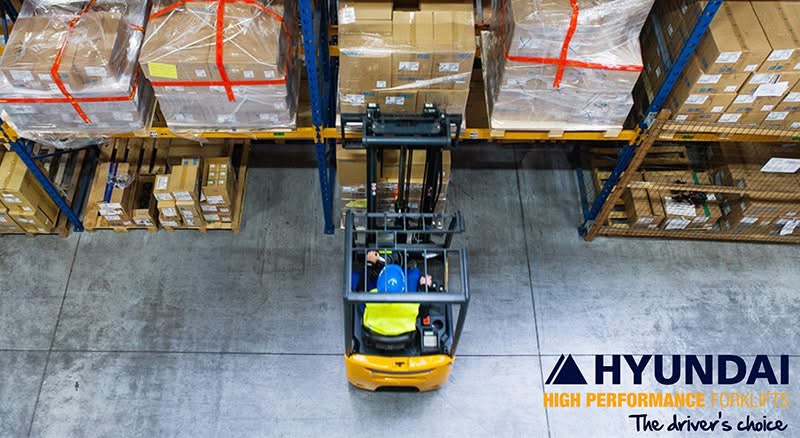Forklift Safety: Why It’s Everyone’s Business

At Sirus, we know forklifts are essential to keeping work moving – whether you’re shifting gear in the warehouse or unloading heavy freight. But just because they’re common doesn’t mean they’re risk-free.
Starting April 2025, Workplace Health and Safety Queensland (WHSQ) launched a state-wide forklift safety campaign targeting mobile plant hazards in the transport and warehousing industries – and for good reason. Forklifts are linked to a concerning number of workplace injuries and fatalities. So now’s a great time to brush up on the basics and take a fresh look at how safe your site really is.
What are the risks when using forklifts?
Where do we start? Even at low speeds, forklifts can cause serious injuries – to operators, pedestrians and bystanders. A standard 2-tonne forklift can weigh more than 5 tonnes when fully loaded. That’s not something you want going sideways.
Some of the biggest risks include:
- Tipping over – caused by uneven loads, sudden braking, or taking slopes too fast.
- Collisions – especially in shared spaces where people and forklifts cross paths.
- Sprains and strains – long hours behind the wheel can cause neck, back and arm injuries if you’re not using proper ergonomics or taking breaks.
- Speed and stopping distance – forklifts don’t stop like your car. A sudden brake can cause the whole load to shift or topple.
- The Legal Stuff (But Important!)
If you’re operating a forklift in Queensland, there are strict legal requirements:
- You must have a High Risk Work Licence (LF) unless you’re an authorised trainee under supervision.
- You need proper training and assessment from a Registered Training Organisation (RTO).
- A Traffic Management Plan must be in place, and everyone on site needs to know it and follow it.
- On-the-spot fines can be issued if you’re caught operating without a licence. So it’s not just about safety—it’s about staying on the right side of the law.
What is a Traffic Management Plan, and why does it matter?
A Traffic Management Plan is more than a few cones and signs. It’s a structured set of rules and physical controls that help prevent collisions and confusion in busy workspaces.
It covers all vehicle movements – not just forklifts – and includes:
- Pedestrian no-go zones
- Give-way rules
- Signage and visibility measures
- High-risk areas like intersections and blind corners
- Ask your employer for a copy and make sure you’re clear on where you can (and can’t) go.
Checklist: what to do before operating a forklift
Before you even turn the key, here’s what you should do:
- Pre-operational check – Go through the manufacturer’s manual and inspect key components.
- Tyres – Look for wear, damage, and correct pressure.
- Fluids – Check fuel, oil, battery water and coolant.
- Seat and seatbelt – Is everything secure and functional?
- Warning devices – Horn, beepers, lights – make sure they work.
- Tines and mast – No cracks, wear or dodgy welds.
- Brakes and controls – All pedals and steering must work correctly.
Traffic management check:
- Know the rules of the site (and follow them).
- Wear your hi-vis vest.
- Stay alert for pedestrians, especially at intersections.
- Use your horn at blind corners.
- Stick to speed limits and stop when required.
- Report any hazards (like worn signs or markings) ASAP.
- Tag out and report anything that isn’t right – don’t just “make do.”
Safety tips that make a big difference
Even small habits can prevent major incidents. Here are some simple tips that work:
✔️ Always wear your seatbelt – even if you’re “just moving it a bit”.
✔️ Don’t overload – stay within the forklift’s rated capacity.
✔️ Use only attachments designed for your forklift model.
✔️ Slow down at intersections and in busy zones.
✔️ Keep your distance from other vehicles and pedestrians.
✔️ Communicate with others on site – use signals and eye contact.
Training: what’s involved and why it’s critical
To get your forklift licence (LF), you’ll need to:
- Be trained by a RTO.
- Be assessed as competent by a licensed assessor.
- Keep a logbook of your hours if doing on-the-job training.
- Site-specific training (e.g. working in cold rooms, with special attachments).
- Refresher training when required.
- A thorough understanding of your site’s Traffic Management Plan.
- Training isn’t a one-and-done exercise. Forklift safety depends on keeping your skills sharp and knowing your environment.
Forklift safety FAQs
Q: Do I need a licence to operate a forklift?
Yes – a High Risk Work Licence (LF) is mandatory in Queensland.
Q: What if I’m still learning?
You must be supervised by a licensed operator and training must be logged.
Q: Where do I get trained?
Through a Registered Training Organisation (RTO). Check out worksafe.qld.gov.au for a list.
Q: What if something feels off with the forklift?
Don’t use it. Tag it out, report the issue, and wait until it’s safe to operate.
At Sirus, we take safety seriously – not just for our own team but for everyone who walks through our doors or works alongside our gear. Whether you’re a seasoned operator or new to the game, forklift safety is everyone’s responsibility.
Now’s the time to double-check your practices, make sure your licence is up to date, and have a look at your site’s traffic management plan.
When it comes to forklift safety, there are no shortcuts.
For more forklift safety information, visit WorkSafe Queensland.
Contact us
If you’re after new forklifts, servicing, or expert advice, get in touch with the team at Sirus on 07 4955 5336 – we’ve got you covered.


